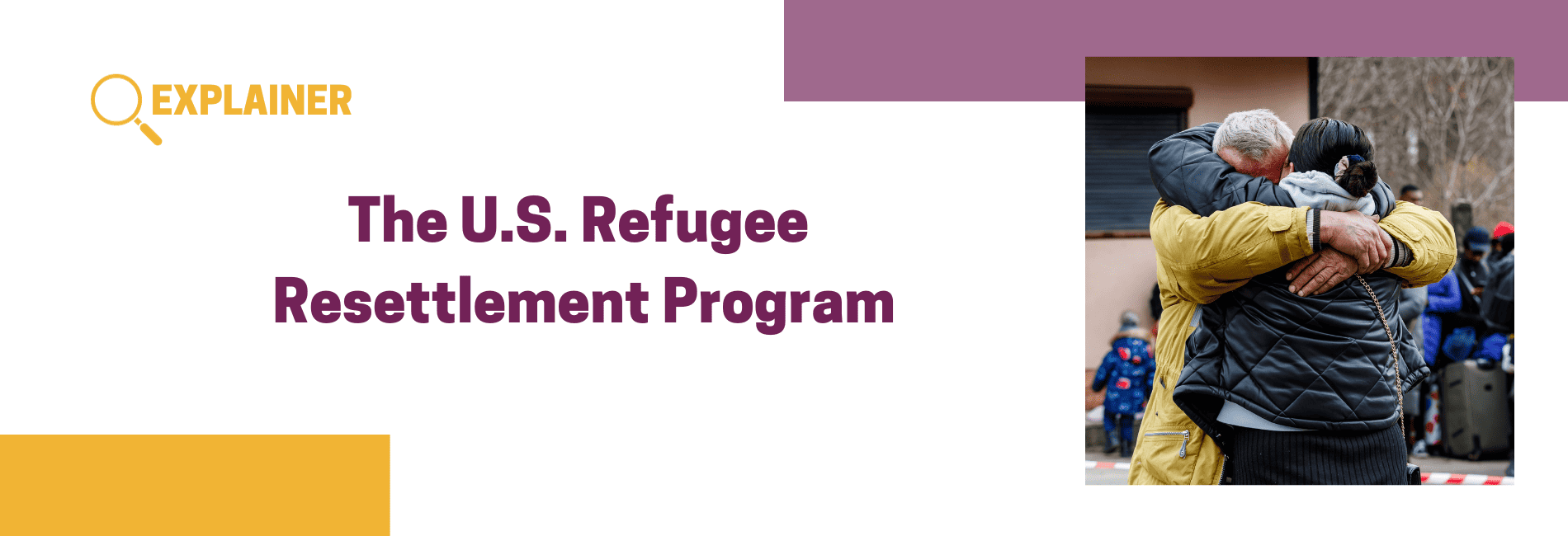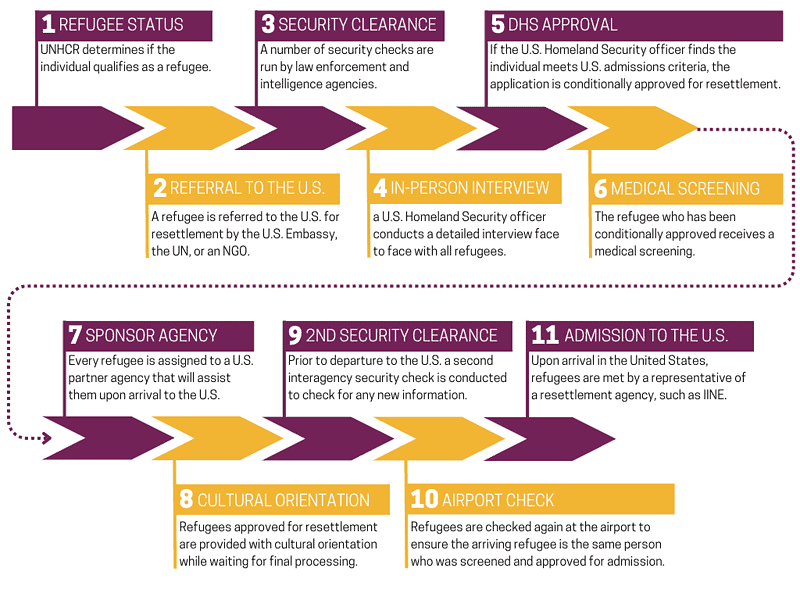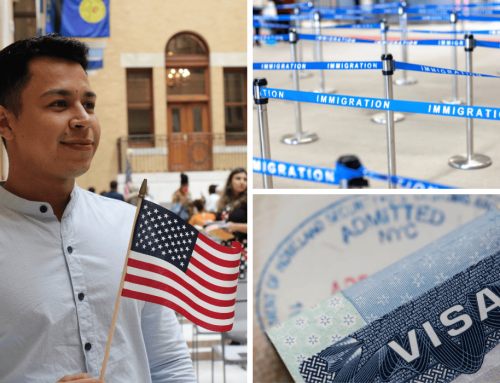
According to the UNHCR, the UN Refugee Agency, by the end of 2022 there were nearly 35.5 million refugees in the world – a number that, devastatingly, continues to grow rapidly due to conflicts and violence, natural disasters, famine, and persecution. These individuals have no choice but to leave their homes to find safety and a new start elsewhere. But what does the resettlement process actually look like for refugees who come to the U.S.? In our latest blog, we unpack frequently asked questions about the U.S. refugee resettlement program.
First, what is a refugee?
Refugees leave their home countries and are unable or unwilling to return because of a well-founded fear of being persecuted for reasons of race, religion, nationality, membership of a particular social group, or political opinion.
Those who obtain the legal status of “refugee” are given protections under international laws and conventions. They can live and work legally and receive federal benefits and lifesaving support from agencies like IINE. The determination is made by an official entity such as a government or the UN Refugee Agency before the journey is made to a new country. In the U.S., refugees can join the workforce and have pathways to become lawful permanent residents and eventually citizens. Learn more about the different terms used to describe people who cross borders in our blog.
What does the U.S. refugee resettlement process entail?
The U.S. vetting process to determine whether someone qualifies as a refugee is extensive and vigorous, often lasting up to two years. These are the 11 steps from application to admission:

Source: World Relief
Why does the U.S. have a refugee resettlement program?
Beyond the humanitarian motives, there are strategic reasons the U.S. established a formal refugee resettlement program in 1980 with bi-partisan congressional support, which continues to this day.
Resettlement is a diplomatic strategy of the U.S. government. By continuing to welcome and resettle refugees, the U.S. models fulfillment of the expectation that countries together create refuge for forcibly displaced people, either through offering neighboring asylum, hosting refugee camps, or admitting and integrating refugees into their communities.
While not a stated purpose of the federal resettlement program, there are strong economic benefits for local communities that receive refugees. Many areas of the U.S., particularly New England, have growing workforce shortages and a critical need for workers. According to the Massachusetts Department of Economic Research, by 2030, the number of jobs across the Commonwealth is expected to grow 21% yet the workforce will expand just 1.5%. Meanwhile, in New Hampshire, there are currently approximately three unfilled jobs for each unemployed worker, according to the New Hampshire Fiscal Policy Institute. Refugees who join the U.S. workforce enter all fields, contribute to the local and federal tax base, purchase homes, and start businesses. Like nearly all newcomers to the U.S., they are eager to work and contribute to the economy. A National Bureau of Economic Research study showed that over a 20-year period, refugees who enter the country between the ages of 18 and 45 pay on average $21,000 more in taxes than they receive in public benefits.
How many refugees does the U.S. resettle every year?
Since 1975, the U.S. has admitted more than 3.3 million refugees, an average of 80,000 per year.
Under U.S. law, the president has the authority to determine the number of refugees the United States will admit each year. In Fiscal Year (FY) 2017 (October 1, 2016 to September 30, 2017), President Obama raised the admission ceiling to 110,000 to respond to a humanitarian crisis that had driven the number of refugees to the highest levels since the end of World War II. Once President Trump took office, however, his administration suspended the refugee program for four months and drastically reduced the number of refugees admitted to the U.S. He went on to lower the refugee admissions ceiling to 45,000 in FY18, 30,000 in FY19, and 18,000 in FY20, the lowest refugee admissions numbers in U.S. history. President Biden has reaffirmed the United States’ commitment to welcoming and supporting refugees, increasing the admissions ceiling to 125,000, the highest target in U.S. history. Read our statement applauding the Biden administration’s commitment to admitting refugees in need of a safe and legal pathway.
How can I help refugees who have been resettled to the U.S.?
Financial support is the U.S. resettlement providers’ number one need. The process of admitting refugees is managed by the federal government but refugee resettlement services are sub-contracted to local agencies and only partially federally funded. By offering your financial support, you play a critical role in securing resources for your local organization and ensuring that refugees find hope, safety, and a new start in our communities.








